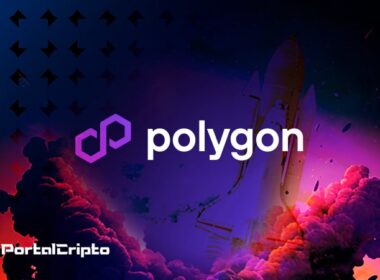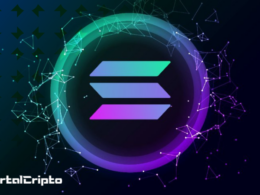GMX is a decentralized spot and perpetual exchange that supports low swap fees and zero price impact trading. Trading is supported by a unique multi-asset pool that receives market-making liquidity provider fees, swap fees, leverage trading (spreads, funding fees, and liquidations) and asset rebalancing.
In this article, we will discuss:
What is GMX?
GMX is a decentralized, perpetual exchange project, initially operating on BSC (BNB Chain), after successful product development on Arbitrum had completely shifted operations to Arbitrum. As one of the first perpetual contract exchanges on Arbitrum, GMX gained many users, then continued to expand into Avalanche.
GMX provides traders with a complete set of tools for spot as well as long/short trading, with a strong focus on cost savings, no arbitrage, no funding fee and minimal settlement possibility. Currently, the project is being considered a competitor of other names like dYdX, Perpetual, MCDEX,… The project's tokenomics is also very special, I will talk about it in more detail in the next section.
How does GMX work?
GMX can help traders trade at low cost without risk of arbitrage. For this, GMX uses its own liquidity pools and the transaction price will be decided by Chainlink's Oracle, using TWAPs (Time-Average Price) of the main DEXs. GMX runs on Arbitrum and Avalanche, both blockchains with low transaction fees and high transaction speed, which provide smooth transaction experience and save time and cost. On the exchange side, GMX can accommodate large liquidity without having as many TVLs as the AMM model, thanks to the use of its own liquidity pool model.
To provide liquidity on GMX, you can use many different tokens (ETH, BTC, LINK, UNI, USDC,…), when providing liquidity, you will receive GLP tokens (tokens representing the liquidity pool of GMX) and when not providing liquidity, you only need to sell GLP to recover the pool tokens. Thanks to the above basic factors, GMX currently has more than 17.000 users and the volume is still quite stable, although the market is in the saturation phase.
The original GMX could be Gambit Financial, a Spot and Perpetual exchange on BSC, later renamed and expanded on Arbitrum. At that time, most of GMX's spot trading volume was on the BSC, however, after the successful development of the Perpetual product on Arbitrum, GMX stopped working on the BSC. Currently, the GMX exchange operates on 2 chains Arbitrum and Avalanche. As one of the first Perp exchanges on Arbitrum, GMX attracted a lot of attention upon launch, revenue steadily increasing during the first 3 months of operation.
Growing strongly in the first year, GMX still maintains this growth rate, now the number of new users has decreased, but the trading volume on GMX is still quite stable, even increasing during the downtrend period in January, last February. Meanwhile, trading volume on other Perpetual exchanges such as dYdX, Perpetual, MCDEX have all declined sharply in recent times. This motivates me to deepen this GMX Protocol.
GMX Operating Model
There are some special keywords when talking about the GMX operating model:
- Liquidity pool with 0 slippage.
- Index tokens.
- Rebalance Portfolio.
GMX liquidity pool
GMX is an exchange with a special operating model, the project does not apply an order book model like dYdX, nor does it use AMM pools like Perpetual. GMX has its own liquidity pools and the price will be negotiated based on the Oracle price.
For example, if you want to exchange ETH for DAI in GMX, the way it works will be as follows:
- (1) First, your ETH will be transferred to ETH Pools.
- (2) After confirming the transferred ETH, GMX will transfer DAI from the DAI pools to your account.
- (3) Pricing will be calculated based on Oracle powered by Chainlink, using TWAPs from major DEXs.
The same with the Margin and Perpetual feature:
- (1) On GMX, you can use the maximum leverage of x30. To use leverage it is necessary to have collateral, GMX accepts any asset traded on GMX as collateral. In the image above, I take the example of a brother mortgaging the USDC.
- (2) For example, if you want to use x5 leverage to buy ETH, just open a Long/Short position at Oracle price, the project will implicitly understand that you are borrowing USDC and buying ETH.
- (3) When Long/Short in GMX, you will also bear some fees like: Transaction Fees: Initial transaction fee to open a position. Borrowing fees: Borrowing fees to increase leverage.
Spread: The small fee paid to the exchange (intermediary). → You don't have to pay financing fee fees because the price on GMX is always equal to the real price (using oracle).
Force:
It can be seen that with this very special liquidity pool model, GMX brings many benefits to Traders, the first one is no funding fees, cheaper, moreover, GMX is an exchange with 2 sessions on Arbitrum and Avax, are all platforms with low transaction fees, so trading on GMX has a smoother experience and lower costs.
Also, because of the Oracle price transaction, you can trade with high volume, possibly even millions of dollars without fear of slippage. In that sense, the GMX model is similar to the Synthetix (SNX) model. Trading on GMX is zero-slippage, similar to Synthetix. On the exchange side, GMX can provide great liquidity without the high TVL like AMMs. The GMX exchange also has some features like Stoploss, Trigger, Partial Liquidation,… these are convenient tools for Traders.
⇒ In summary: GMX has most of the features and advantages that Traders are satisfied with.
Weakness:
Each exchange will have its strengths and weaknesses, just like GMX. The first weakness of GMX is that the number of trading pairs is quite small, apart from stablecoins, only 4 tokens can be traded: BTC, ETH, UNI, LINK. Compared to other Perpetual DEX exchanges, it is much less: dYdX has almost 20 pairs, Drift Protocol has more than 10 pairs.
The second weakness, when using the liquidity pool model, the trading volume on the GMX is limited by the liquidity of the pool itself, which means that users cannot trade with higher volumes. However, GMX managed to attract more than $163 million of liquidity, which somewhat solved this problem.
Liquidity Provider
This is the most unique part of the GMX operating model, so please read it carefully. Providing liquidity on GMX will work as follows:
- (1) You want to provide liquidity on GMX, it can be provided with many tokens (ETH, BTC, LINK, UNI, USDC,…).
- (2) In return, you will receive GLP tokens. On the other hand, when you no longer want to provide liquidity, you can sell GLP tokens to receive assets in the pool.
GLP is the token that represents all liquidity pools on GMX. The GLP can be understood as an index that represents a basket of assets used to provide liquidity in the GMX. This means that by providing liquidity on GMX, you are providing liquidity for the entire asset, not just a single token. That is, you are investing in an index with the following ratio: 37% USDC: 26,7% ETH: 13,5% BTC: 10,6% DAI. Therefore, when the assets in the basket of assets increase, the price of the GLP token will increase, and vice versa, when the value of the basket of assets decreases, the price of the GLP token will decrease.
Rebalancing in liquidity pools
The proportion of the Pool's assets will not be fixed and decided by GMX. As an exchange, GMX must ensure good liquidity for trading activities, each asset will have a cap fee. For example, the ideal ratio of ETH calculated by GMX is 25%, BTC is 15%, USDC is 30%.
But according to the current picture, the ratio of ETH is 26,7%, USDC is 37%, which is higher than ideal. Therefore, in order to lower the proportion of ETH, USDC in the pool, GMX will reduce the transaction fee when traders using other tokens buy ETH in the pool or use GLP. On the other hand, if the Trader wants to sell ETH, increase the amount of ETH in GMX's Liquidity Pool, they will incur higher fees. Currently, the transaction fee on GMX fluctuates at 0,2% – 0,4%.
Sale off
The GMX settlement fee ranges from 60 to 70%. Settlement is important for all exchanges, on GMX, with pools of liquidity, the liquidity provider (GLP holder) is also the one who will settle the “settled” orders. At the same time, with investors' profit orders, the liquidity provider is also the party that settles and pays the interest. The liquidity provider acts as a Clearing House. Simply put, on GMX, traders do not trade with each other, but with the liquidity provider itself. If the trader makes a profit, the liquidity provider will lose and vice versa.
GMX and GLP Token
GMX Token
The GMX cryptocurrency has a total supply of 13.250.000 GMX tokens. By holding the project's GMX token, you get some benefits: GMX is the native token of the GMX exchange, so you will have the right to vote on governance activities as a GMX holder.
In addition, GMX holders will receive various rewards for staking tokens:
- Revenue Sharing: Holders of GMX Share Tokens get back 30% of the total transaction fees and this amount is paid in the form of AVAX or ETH depending on which chain you stake.
- GMX in Escrow (esGMX): Stake GMX helps you to get esGMX, esGMX can be used in 2 ways: Keep betting to recover esGMX and ETH similar to GMX. Vesting to convert to GMX within 1 year. During the acquisition period, esGMX will not be charged an additional bonus.
- Multiplier Points: MP is another type of reward when you bet GMX, APR is fixed at 100%. After that, you can bet MP and get a reward equivalent to betting 1 GMX. This helps GMX's long-term investors get a lot of rewards, but if GMX unmarks, a corresponding amount of MP will also be burned.
LPG Token
GLP is a basket of assets used for trading and leverage trading. It can be minted using any of the assets in the basket and burned to redeem any of the assets. The price for minting and redemption is calculated based on the total value of assets in the index, including profit and loss on open positions divided by the LPG supply.
Where to buy the GMX token?
GMX cryptocurrency can be traded on the following exchanges:
- bybit
- MEXC
- BKEX
- coinex
GMX Price Forecast (GMX)
The price of GMX is predicted to reach a maximum level of $38.12 throughout 2022. As early as 2023 according to our crypto price prediction index, GMX (GMX) may reach a maximum level of $73.35, with the average price of $54.55 trade. In 2025 according to our crypto price prediction index, GMX is expected to cross an average price level of $88.43.
The minimum expected value of the GMX price at the end of the current year should be $81.65. Furthermore, GMX can reach a maximum price level of $90.12. The price of GMX is predicted to reach the lowest possible level of $78.26 in 2030. According to our crypto price prediction index, the price of GMX could reach a maximum possible level of $144.33, with the predicted average price of $108.75 .
Conclusion
GMX is an excellent platform with amazing products suitable for people who want to trade on decentralized platforms with up to 30x leverage. LPG is another great innovation where people are exposed to a healthy mix of blue chip cryptocurrencies and stablecoins at the same time.
Income is sustainable in GMX and GLP as it comes from traders paying trading fees as well as positions being liquidated. Compared to the usual stablecoin yields which are around 10-20% APR where yields are unsustainable as they are paying using their native chips. As they begin to expand into other chains and offer more products, I believe that GMX can become a blue-chip DeFi platform in the future.












